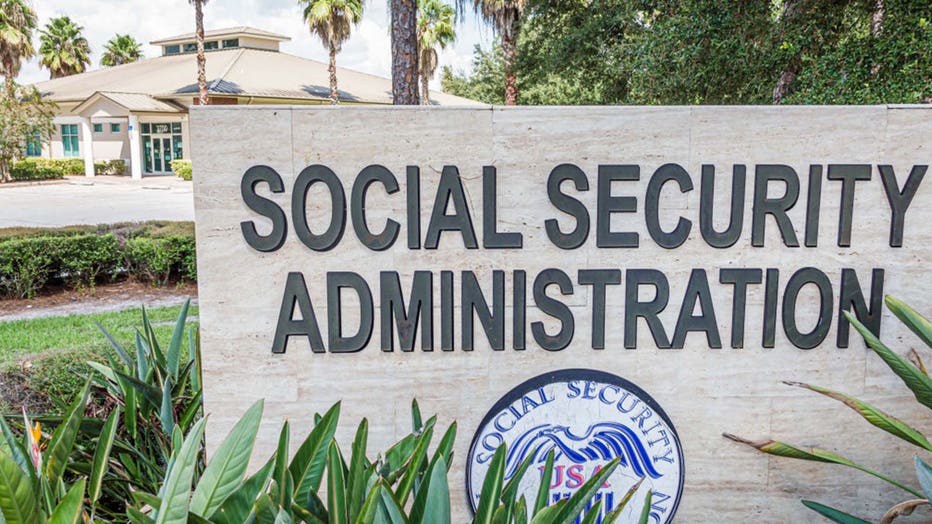Social security annual cost-of-living set to increase in 2022
WASHINGTON - Rising inflation is expected to lead to a sizeable increase in Social Security's annual cost-of-living adjustment, or COLA, for 2022. Exactly how much will be revealed Wednesday morning after a Labor Department report on inflation during September, a data point used in the final calculation.
Over the last 10 years, the Social Security COLA has averaged about 1.7% annually as inflation remained low. But the economic recovery from the coronavirus pandemic has triggered rising prices for a wide range of goods and services, and that's expected to translate to bigger checks for retirees.
WHY ARE SOCIAL SECURITY BENEFITS ADJUSTED?
Policymakers say the COLA works to preserve the purchasing power of Social Security benefits, and shouldn’t be seen as a pay hike for retirees.
At one time Congress had to approve inflation increases, but starting in the mid-1970s lawmakers turned that function over to nonpartisan experts within the government bureaucracy. The annual review is now tied to changes in an official measure of inflation and proceeds automatically and with no political brinksmanship.

FILE - Social Security Administration, federal government agency.
RELATED: Americans quit jobs at highest rate on record in August, Labor Department says
HOW BIG AN INCREASE FOR 2022?
Stay tuned.
The Great Recession saw a COLA increase of 5.8% for 2009, and the number for next year may rival that.
This summer, government economic experts predicted a COLA in the range of 6%. If that's the case, it would be the biggest Social Security hike the vast majority of baby boomer retirees have seen. Up to now, they've collected meager to modest annual adjustments, not counting three years for which there was no COLA because inflation barely showed a pulse.
A 6% COLA would increase the average Social Security payment for a retired worker by close to $93 a month, to $1,636 next year. Compare that to this year's COLA, worth only about $20 a month.
RELATED: Survey: 69% of hiring managers want to see COVID-19 vaccination status on resumes
WHAT'S CHANGED OVER THE PAST YEAR?
As the economy recovers from the shock of coronavirus shutdowns, prices are rising at a pretty good clip.
Gas serves as an ever-present reminder, above $3 a gallon in most states, $4 a gallon in California and Hawaii. But food had already been going up and so are labor costs as employers compete to hire choosy workers seeking higher pay and better benefits. Add to the mix supply chain problems that have slowed deliveries of everything from refrigerators to running shoes.
All that gets sifted into the prices that consumers pay for their everyday needs.
WHO'S AFFECTED?
The COLA is big enough to have an impact on the overall economy.
It affects the household budgets of about 1 in 5 Americans, including Social Security recipients, disabled veterans and federal retirees, about 70 million people.
About half of seniors live in households where Social Security benefits account for at least 50% of their income, and one-quarter rely on their monthly payment for all or nearly all their earnings. For this latter group, the COLA can literally make a difference in what they're able to put on the table.
RELATED: US unemployment claims fall to 326,000, first drop in four weeks
DO PRIVATE PENSIONS ALSO PROVIDE A COLA?
Inflation protection is central to Social Security's benefit design, but it's not so common among traditional private pensions. Benefits paid by most employer plans gradually lose some of their purchasing power over the years.
Social Security not only increases retiree checks to compensate for inflation, but it then adds that amount to a person's underlying benefit so it grows with compounding as future COLAs are factored in.
CAN SOCIAL SECURITY AFFORD TO KEEP PAYING COLAs?
Proposals have been floated both to increase or trim back COLAs in the context of a broader Social Security overhaul. Many advocates for older people argue that the inflation index currently used does not adequately reflect the higher health care costs faced by the aging.
On the other side, groups pressing to reduce federal deficits urge switching to an alternate inflation measure that factors in consumers' habit of substituting cheaper goods when prices rise. That would yield slightly lower estimates of cost-of-living changes.
Social Security trustees said in their report this year that the program's long-term fiscal imbalance is casting a longer shadow.
RELATED: Debt ceiling: House returns to approve increase through early December
For the first time in 39 years, the cost of delivering benefits will exceed Social Security's total income from payroll tax collections and interest. From here on in, Social Security will have to tap its savings to pay full benefits.
The report also moved up the exhaustion date for Social Security’s massive trust fund by one year, to 2034. At that point, the program will be able to pay only 78% of scheduled benefits, the report said.
Such a reduction would represent a major hardship for most people who depend on Social Security, even middle-class retirees.
But hardly anyone with political power in Washington is talking about fixes.
"Social Security is an issue that really needs to be addressed together by both parties," said David Certner, legislative policy director at AARP. "It is very difficult to do bipartisan work on something as big and important as Social Security in what is a very partisan atmosphere."

